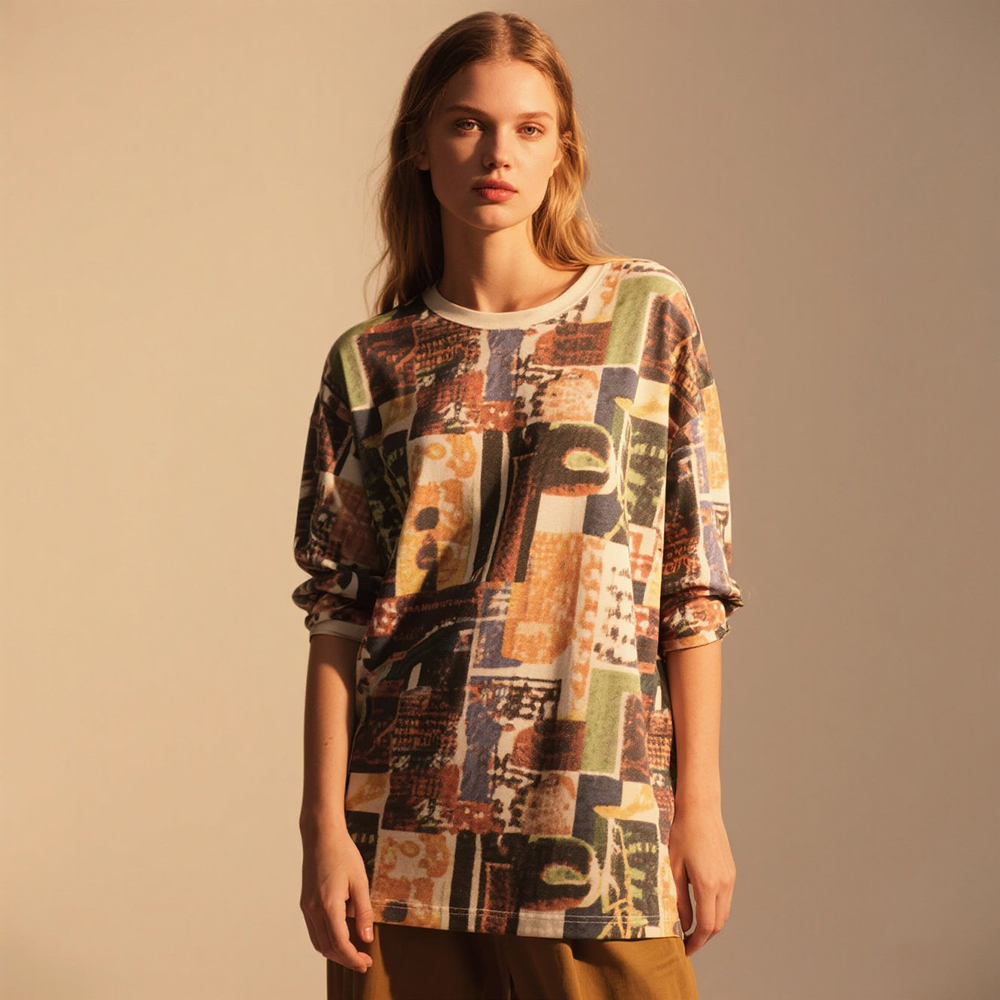As a clothing export manager, one of the most frequent questions I encounter from buyers is: “When should we opt for 3/4 sleeves versus 7/8 sleeves ?” While both styles fall under the “mid-length sleeve” category, their subtle differences in length, design, and functionality can significantly impact a product’s market appeal, comfort, and sales performance. In this article, I’ll break down key factors to help you decide which sleeve style aligns best with your target audience, product line, and business goals.

1. Seasonal & Climatic Fit: Match Sleeve Length to Weather Patterns
The first rule of thumb: sleeve length should complement the climate of your target market. Let’s start with the basics: 3/4 sleeves typically end at the mid-forearm (around 15-20cm above the wrist), while 7/8 sleeves fall closer to the wrist (about 5-10cm above it).
- For hot, tropical climates (e.g., Southeast Asia, Middle East in summer): 3/4 sleeves are often the safer bet. Their shorter length allows better airflow around the arms, reducing heat retention—critical for regions where temperatures hover above 30°C. For example, a linen blouse with 3/4 sleeves will keep a customer cool in Bangkok’s humidity without feeling restrictive.
- For mild to warm seasons with temperature fluctuations (e.g., spring/fall in Europe, North America): 7/8 sleeves strike a balance. They provide more coverage than short sleeves (protecting from cool evenings or air-conditioned offices) but stay light enough for daytime wear. A cotton dress with 7/8 sleeves, for instance, could be a go-to piece for a Parisian spring, transitioning seamlessly from morning coffee to afternoon strolls.
2. Target Market Preferences: Understand Cultural & Fashion Norms
Your buyers’ customer base isn’t just defined by geography—it’s shaped by cultural tastes and current trends.
- In conservative markets (e.g., parts of the Middle East, South Asia): 7/8 sleeves may be more acceptable. They offer modest coverage while still looking modern, avoiding the “too revealing” perception that short sleeves might carry in these regions. A tunic with 7/8 sleeves and a high neckline, for example, could cater to modest fashion shoppers in Dubai.
- In trend-driven markets (e.g., South Korea, Scandinavia): 3/4 sleeves are often preferred for their versatility. They pair effortlessly with layered jewelry or a cropped cardigan, aligning with the “effortlessly chic” aesthetic popular in these regions. A cropped jacket with 3/4 sleeves, for instance, has been a staple in Seoul’s street style this year.
3. Design & Silhouette: Enhance Garment Proportions
Sleeve length plays a crucial role in defining a garment’s silhouette. Here’s how to align it with your product’s design intent:
- For a streamlined, modern look: 3/4 sleeves work wonders. Their shorter hem creates a clean line from shoulder to wrist, making the arms appear slimmer and the torso more elongated. This is ideal for fitted dresses, blazers, or jumpsuits targeting fashion-forward buyers.
- For a soft, feminine silhouette: 7/8 sleeves add subtle volume without overwhelming the frame. The gradual taper from shoulder to wrist softens the arm’s appearance, making them a great choice for blouses, shirt-dresses, or maternity wear aimed at comfort-focused customers.
4. Fabric & Construction: Ensure Quality & Durability
The right sleeve length also depends on the fabric you’re working with.
- Lightweight, flowy fabrics (e.g., chiffon, rayon): 3/4 sleeves prevent the fabric from dragging or bunching, maintaining a polished look. For example, a chiffon blouse with 3/4 sleeves will drape elegantly without feeling heavy—perfect for summer collections.
- Sturdier, structured fabrics (e.g., cotton, linen blends): 7/8 sleeves hold their shape better. The extra fabric length adds stability, reducing the risk of sagging or wrinkling at the wrist. A linen-blend tunic with 7/8 sleeves, for instance, will stay crisp even after multiple washes—key for workwear or casual daily wear.
Final Thoughts: Align with Your Niche
Ultimately, the choice between 3/4 and 7/8 sleeves boils down to knowing your audience. Ask yourself: What’s their lifestyle? What weather do they face? What styles do they see as “fashionable”? By answering these questions, you’ll not only boost sales but also build stronger trust with your buyers.
At Sheen, we specialize in tailoring sleeve designs to meet diverse market needs—from prototyping to bulk production, our team ensures every stitch aligns with your brand’s vision. Whether you’re launching a new summer collection or refreshing your winter lineup, we’re here to help you choose the perfect sleeve style.
Welcome to explore more insights on our [Sheen Blog]for tips on fabric selection, trend forecasting, and export best practices. Ready to start your next project? Feel free to reach out—we’re just an inquiry away!

